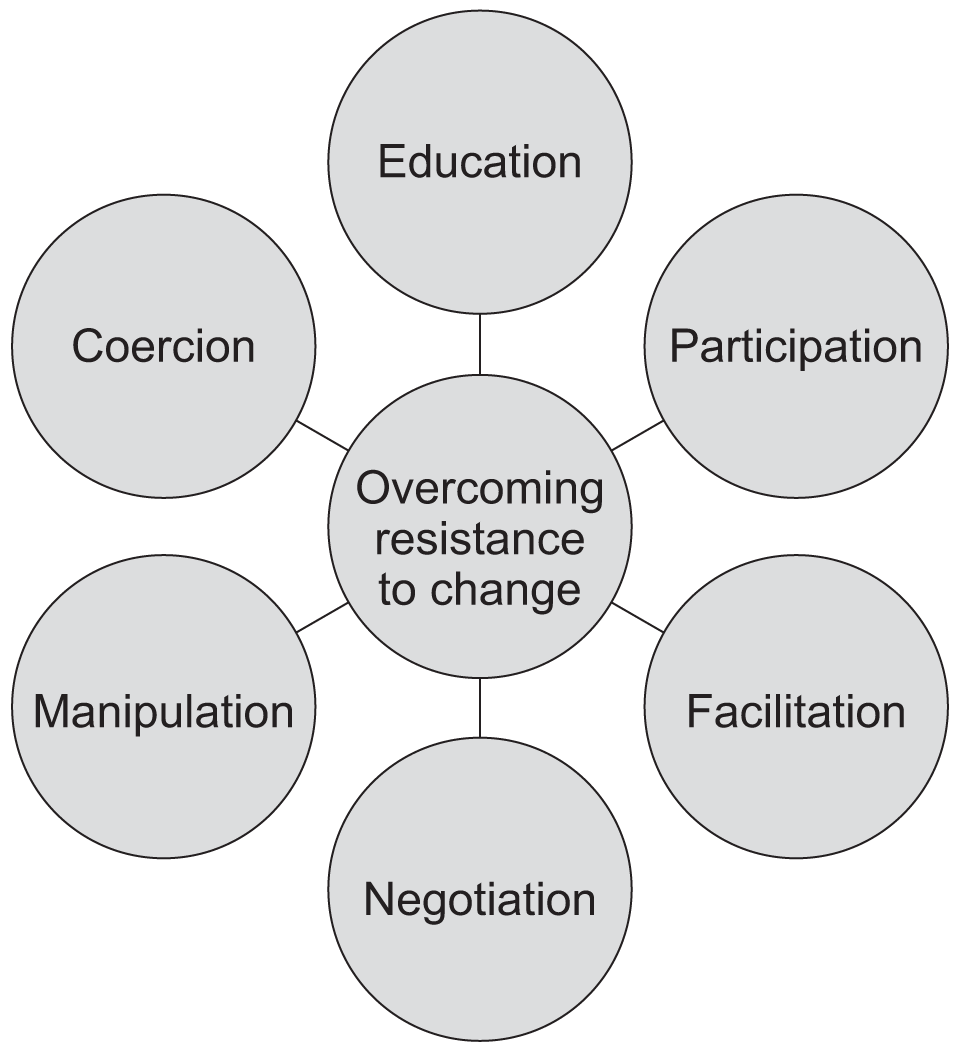Specifications that use this resource:
Teaching guide: Kotter and Schlesinger's model for overcoming resistance to change
Outlines some of the methods that might be used to overcome resistance to change.
Model/theory

Key points
Six methods of overcoming resistance to change are:
1. Education and communication
This approach may be appropriate if people lack information or have inaccurate information about the proposed change. Education can help people to understand why change is necessary. However, it may take time to convince people and win the argument.
2. Participation and involvement
This can help overcome change by getting people involved in the process. This means that people may have a sense of ownership and so may be more willing to get involved and make it work.
3. Facilitation and support
Some people resist change because they are afraid of it. If you can help the process of change and support people so they have the skills and resources they need to cope with it, this can help it to be accepted.
4. Negotiation and agreement
If people are resistant to change it may be possible to negotiate with them or bargain to win their agreement. This may mean compromise is needed and the form of change is slightly different (and possibly better) than originally intended.
5. Manipulation and co-option
This may involve offering rewards to win over key influential people who will then get others to agree to change.
6. Explicit and implicit coercion
If other methods are not successful or possible then you may want to force change through. People may not agree with the change but may do it because they have to. Over time, having changed their behavior, they may come to agree with the change itself if it proves successful.
When you can use this
- When teaching any form of change and how to introduce it.
- When considering how to introduce new policies and approaches. Managers need to consider the reasons for resistance and then how best to overcome them given the time and resources available and factors such as the importance of the change being accepted by others.
Where it's been used
Q12, A-level paper 1, 2018